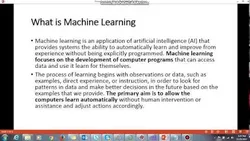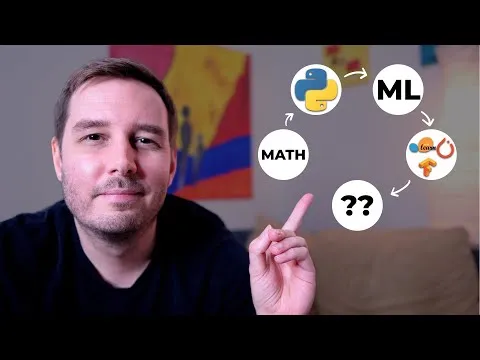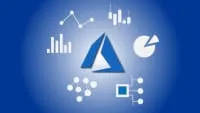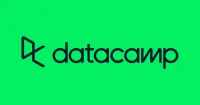
Data Science and Machine Learning with Python and R 
This course provides an introduction to Data Science and Machine Learning using Python and R. It covers topics such as supervised and unsupervised Machine Learning, Anaconda installation with packages, and the basics of Python and R. Participants will gain an understanding of the fundamentals of Machine Learning and how to apply them to real-world problems. ▼
ADVERTISEMENT
Course Feature
![]() Cost:
Cost:
Free
![]() Provider:
Provider:
Youtube
![]() Certificate:
Certificate:
Paid Certification
![]() Language:
Language:
English
![]() Start Date:
Start Date:
On-Demand
Course Overview
❗The content presented here is sourced directly from Youtube platform. For comprehensive course details, including enrollment information, simply click on the 'Go to class' link on our website.
Updated in [February 21st, 2023]
What does this course tell?
(Please note that the following overview content is from the original platform)
What is Machine Learning in Data Science- Machine Learning Tutorial with Python and R-Part 1.
What is Supervised Machine Learning- Machine Learning Tutorial with Python and R-Part 2.
Anaconda installation with Packages- Machine Learning Tutorial with Python and R-Part 3.
Important libraries used in python Data Science- Machine Learning Tutorial with Python and R-Part 4.
PySpark Tutorial for Beginners | Apache Spark with Python -Linear Regression Algorithm.
Principle Component Analysis (PCA) using sklearn and python.
Computer Vision using Microsoft Cognitive Services for Images.
How to select the best model using cross validation in python.
TPR,FPR,FNR,TNR, Confusion Matrix.
Precision, Recall and F1-Score.
Artificial Neural Network for Customer's Exit Prediction from Bank.
GridSearchCV- Select the best hyperparameter for any Classification Model.
RandomizedSearchCV- Select the best hyperparameter for any Classification Model.
K Means Clustering Intuition.
Hierarchical Clustering intuition.
Complete Life Cycle of a Data Science Project.
How we can apply Machine Learning in Finance.
Deep Learning in Medical Science.
Setting up Raspberry pi 3 B+.
How to switch your career to Data Science..
Linear Regression Mathematical Intuition.
Handle Categorical features using Python.
DBSCAN Clustering Easily Explained with Implementation.
Curse of Dimensionality Easily explained| Machine Learning.
Feature Selection Techniques Easily Explained | Machine Learning.
Cross Validation using sklearn and python | Machine Learning.
Handling Missing Data Easily Explained| Machine Learning.
Deploy Machine Learning Model using Flask.
Deployment of Deep Learning Model using Flask.
How to Visualize Multiple Linear Regression in python.
Predicting Heart Disease using Machine Learning.
Predicting Lungs Disease using Deep Learning.
Stock Sentiment Analysis using News Headlines.
Random Forest(Bootstrap Aggregation) Easily Explained.
Voting Classifier(Hard Voting and Soft Voting Classifier).
Credit Card Fraud Detection using Machine Learning from Kaggle.
Hyperparameter Optimization for Xgboost.
Tutorial 45-Handling imbalanced Dataset using python- Part 1.
Tutorial 46-Handling imbalanced Dataset using python- Part 2.
DNA Sequencing Classifier using Machine Learning.
Credit card Risk Assessment using Machine Learning.
Why, How and When to Scale Features in Machine Learning?.
How to choose number of hidden layers and nodes in Neural Network.
Diabetes Prediction using Machine Learning from Kaggle.
How to Read Dataset in Google Colab from Google Drive.
Malaria Disease Detection using Deep Learning.
Python Application to Track Amazon Product Prices.
What is Cross Validation and its types?.
Train Test Split vs K Fold vs Stratified K fold Cross Validation.
My Path on Becoming a Data Scientist- Motivation.
Complete Life Cycle of a Data Science Project.
Step By Step Transition Towards Data Science.
What should be your Salary Expectation as a Data Scientist?.
How to Crack Data Science Interviews- Motivations.
The Role of Maths in Data Science and How to Learn?.
Tutorial 42 - Ensemble: What is Bagging (Bootstrap Aggregation)?.
Tutorial 43-Random Forest Classifier and Regressor.
Important Tools and Libraries Used By Data Scientist.
How To Apply Data Science In Your Domain?.
Skills Required To Become A Data Analyst and a Data Scientist.
How To Become Expertise in Exploratory Data Analysis.
How to Prepare For Data Science Interviews.
Why and When Should we Perform Feature Normalization?.
Flask Vs Django and When Should You Use What?.
Top 5 Python IDEs For Data Science.
Perform Web Scraping On Wikipedia- Data Science.
We consider the value of this course from multiple aspects, and finally summarize it for you from three aspects: personal skills, career development, and further study:
(Kindly be aware that our content is optimized by AI tools while also undergoing moderation carefully from our editorial staff.)
This course provides an introduction to the fundamentals of data science and machine learning with Python and R. It covers topics such as Anaconda installation, important libraries used in Python data science, linear regression algorithm, principle component analysis, computer vision, cross validation, artificial neural networks, grid search and randomized search, k-means and hierarchical clustering, deep learning, and more.
Possible Development Paths include becoming a data analyst, data scientist, machine learning engineer, or software engineer. Learners can also pursue further education in data science, machine learning, or artificial intelligence.
Learning Suggestions for learners include taking courses in mathematics, statistics, and programming. Learners should also become familiar with the Python and R programming languages, as well as the libraries and frameworks used in data science and machine learning. Additionally, learners should practice coding and data analysis to gain experience in the field.
[Applications]
It is recommended that those who have completed the course Data Science and Machine Learning with Python and R apply their knowledge to their own domain. They should be able to use the tools and libraries discussed in the course to create their own projects. They should also be able to use the techniques discussed in the course to analyze data and make predictions. Additionally, they should be able to use the knowledge gained from the course to prepare for data science interviews and become an expert in exploratory data analysis.
[Career Paths]
1. Data Scientist: Data Scientists use their knowledge of mathematics, statistics, and computer science to analyze large datasets and uncover patterns and trends. They use this information to develop predictive models and algorithms that can be used to make decisions and solve problems. Data Scientists are in high demand due to the increasing amount of data being generated and the need to make sense of it. Developing trends in this field include the use of artificial intelligence and machine learning to automate data analysis and the use of big data to gain insights into customer behavior.
2. Machine Learning Engineer: Machine Learning Engineers are responsible for developing and deploying machine learning models. They use programming languages such as Python and R to build algorithms and use data to train and test models. They also use tools such as TensorFlow and Keras to create neural networks. Developing trends in this field include the use of deep learning to create more accurate models and the use of reinforcement learning to automate decision-making.
3. Data Analyst: Data Analysts use their knowledge of mathematics, statistics, and computer science to analyze large datasets and uncover patterns and trends. They use this information to develop reports and visualizations that can be used to make decisions and solve problems. Developing trends in this field include the use of artificial intelligence and machine learning to automate data analysis and the use of big data to gain insights into customer behavior.
4. Business Intelligence Analyst: Business Intelligence Analysts use their knowledge of mathematics, statistics, and computer science to analyze large datasets and uncover patterns and trends. They use this information to develop reports and visualizations that can be used to make decisions and solve problems. Developing trends in this field include the use of artificial intelligence and machine learning to automate data analysis and the use of big data to gain insights into customer behavior.
Course Provider

Provider Youtube's Stats at AZClass
Over 100+ Best Educational YouTube Channels in 2023.
Best educational YouTube channels for college students, including Crash Course, Khan Academy, etc.
AZ Class hope that this free Youtube course can help your Machine Learning skills no matter in career or in further education. Even if you are only slightly interested, you can take Data Science and Machine Learning with Python and R course with confidence!
Discussion and Reviews
0.0 (Based on 0 reviews)
Explore Similar Online Courses

PowerShell Toolmaking Fundamentals

Matrices

Python for Informatics: Exploring Information

Social Network Analysis

Introduction to Systematic Review and Meta-Analysis

The Analytics Edge

DCO042 - Python For Informatics

Causal Diagrams: Draw Your Assumptions Before Your Conclusions

Whole genome sequencing of bacterial genomes - tools and applications

How I would learn Machine Learning (if I could start over)

Learn Data Science and Machine Learning on Microsoft Azure


Start your review of Data Science and Machine Learning with Python and R